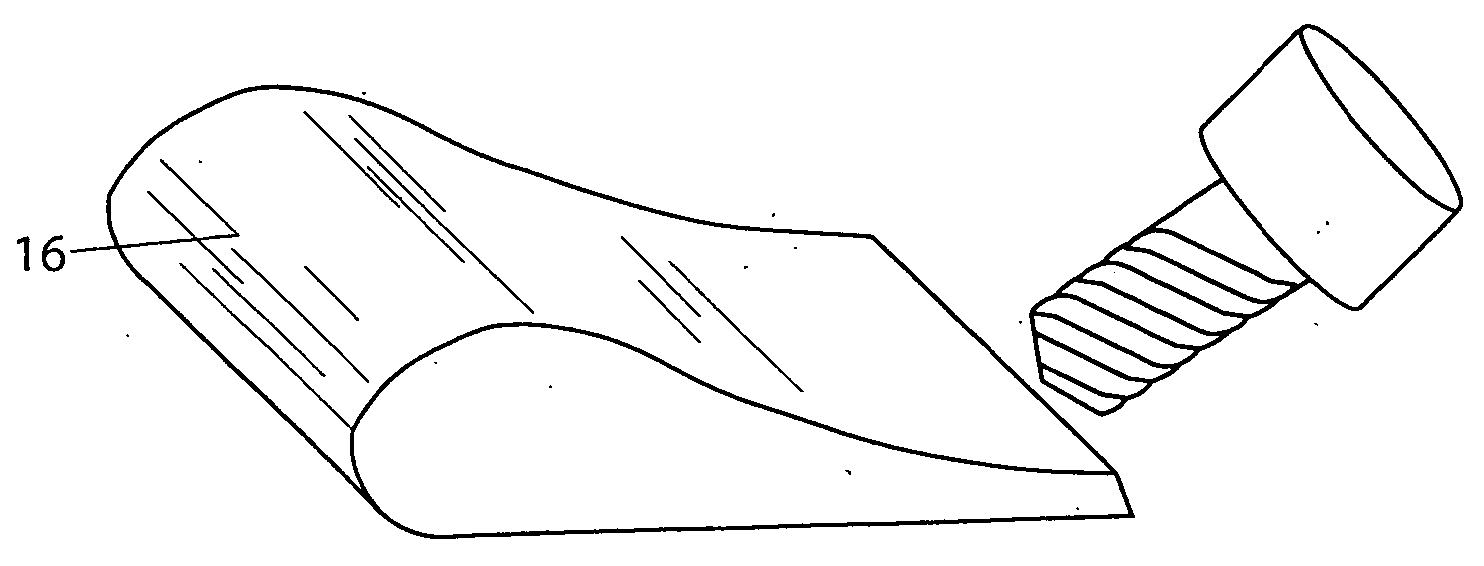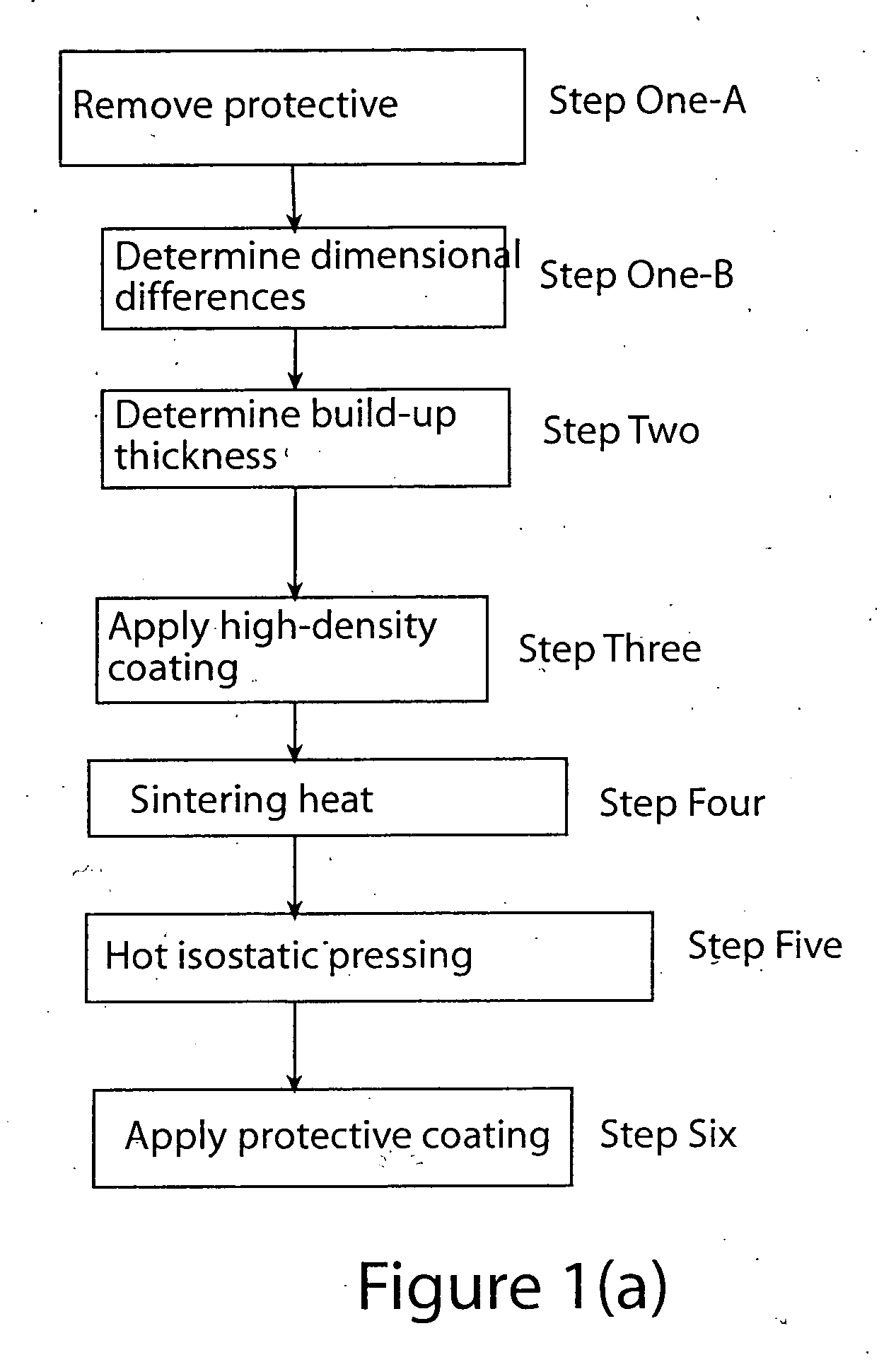During the lifetime of a gas turbine engine, the cold section components of the engine become worn and in need of repair.
Conventional methods for repairing the cold section components of a gas turbine engine are limited to minor blending.
These deforming stresses cause
creep rupture and fatigue problems that can result in the failure of the part.
However, like the rotating parts, these parts are subjected to other deformation such as from hot gas
erosion and / or foreign particle strikes.
This deformation results in the alteration of the dimensions of the airfoil section.
The alteration of the dimensions of the airfoil section can detrimentally modify the
airflow through the gas turbine engine which is critical to the engine's performance.
The repair operations that remove metal by chemical stripping,
grit blasting, blending and
polishing shorten the life cycle of the vane.
When certain minimum airfoil dimensions cannot be met the part is deemed non-repairable and must be retired from service.
During use, the coating at the
cutting surface of the
cutting tool is subjected to shearing forces resulting in flaking off the coating of the tool substrate.
The failure is likely to occur at the narrow bonding interface.
Since the coating adheres to the
tool bit substrate mostly via a
mechanical bond located at a boundary interface, flaking and chipping off the coating of the substrate is likely to occur during use, limiting the service life of the
tool bit. FIG. 12(b) is a side view of a prior art
tool bit having a fixed
wear resistant cutting tip.
During extended use the tool bit is likely to fail at the relatively brittle brazed interface between the
metal cutting tip and the tool substrate, and again, the useful service life of the tool bit is limited.
The high speed collision of the metal particles results in very
large strain (approximately 80% in the direction normal to
impact).
A cast metal component will typically have a number of imperfections caused by voids and contaminants in the cast
surface structure.
The manufacture of metal components often entails costly operations to produce products with the desired surface texture, material properties and dimensional tolerances.
However, traditional HIP treatments are performed at temperatures and pressures that are too elevated for treating relatively articles made of soft metals, such as an aluminum containment ring for a gas turbine engine.
Additionally, the traditional HIP treatment vessels are not large enough to
handle parts as large as the containment ring of a gas turbine engine.
Metal alloy components, such as gas turbine parts such as blades and vanes, are often damaged during use.
The gas turbine parts also sustain considerable damage due to impacts from foreign particles.
Since they are costly to produce, various repair methods are employed to refurbish damaged gas turbine blades and vanes.
Again, the conventional low-pressure
plasma spray process forms a
mechanical bond at an interface boundary between the coating and the substrate, resulting in a structure that is prone to failure due to chipping and flaking.
However, the root section of the blade is exposed to stress of a type different than the airfoil section, usually referred to as
low cycle fatigue.
None of these prior attempts provide for the effective and efficient restoration of the critical airfoil dimensions of a gas turbine engine airfoil part.
The stripping of the protective coating on the part during the repair process is a major contributing factor resulting in the discarding of the part.
Excessive wear in the area of the contact surfaces 44 can have detrimental consequences on the operation of the gas turbine engine, and thus is an area of concern.
Excessive wear in the area of the contact surfaces 44 caused by chipping and flaking can have detrimental consequences on the operation of the gas turbine engine.
 Login to View More
Login to View More 


